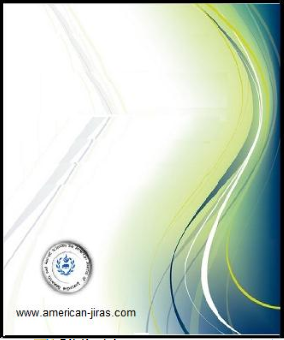



GENERAL INFORMATION

American Journal of Innovative Research & Applied Sciences
Share us on Social Media Links:



| ISSN: 2429-5396 (e) | www.american-jiras.com | |
| Web Site Form: v 0.1.05 |
| Web Site Form: v 0.1.05 |


ResearchBib, Google Scholar, SIS database, i.f.s.i.j, Scribd, IISJ, Eurasian Scientific Journal Index (ESJI), Indianscience.in, arastirmax, Directory of Research Journals Indexing, Pak Academic Sesearch, AcademicKeays, CiteSeerX, UDL Library, CAS Abstracts, J-Gate, WorldCat, Scirus, IET Inspec Direct, and getCited
Indexed by:
| HOME || ABOUT US || ARCHIVES || AIMS AND SCOP || AUTHORS || REVIEW|| SUBMIT MANUSCRIPT || EDITORIAL BOARD || CONTACT US |
| HOME | ABOUT US | ARCHIVE | AIMS AND SCOP | AUTHORS | REVIEW | SUMIBMIT MANUSCRIPT | EDITORIAL BOARED | PUBLICATION FEE |
| | ARTICLES | Am. J. innov. res. appl. sci. Volume 6, Issue 1, Pages 35-40 (January 2018) |
| Research Article |
American Journal of innovative
Research & Applied Sciences
Research & Applied Sciences
ISSN 2429-5396 (Online)
OCLC Number: 920041286
OCLC Number: 920041286

|
| JANUARY | VOLUME 6 | N° 1 | 2018 |
Authors Contact
*Correspondant author and authors Copyright © 2017:
| Brahim Aouinty *1-2 | Mohamed Chennaoui 1-3 | Souhail Aboulfadl 2 | and | Fouad Mellouki 2 |
*Correspondant author and authors Copyright © 2017:
| Brahim Aouinty *1-2 | Mohamed Chennaoui 1-3 | Souhail Aboulfadl 2 | and | Fouad Mellouki 2 |
Affiliation.
1. Laboratoire des Sciences de la Vie et de la Terre | Centre Régional des Métiers de l’Enseignement et de la Formation Casablanca-Settat | El Jadida | Morocco |
2. Laboratoire LVMQB / ETB University Hassan II | department of Biology| Faculté des Sciences et Techniques | Mohammedia | Morocco |
3. Laboratoire de l’eau et de l’environnement | Université Chouaïb Doukkali | Faculté des Sciences | El Jadida | Morocoo |
1. Laboratoire des Sciences de la Vie et de la Terre | Centre Régional des Métiers de l’Enseignement et de la Formation Casablanca-Settat | El Jadida | Morocco |
2. Laboratoire LVMQB / ETB University Hassan II | department of Biology| Faculté des Sciences et Techniques | Mohammedia | Morocco |
3. Laboratoire de l’eau et de l’environnement | Université Chouaïb Doukkali | Faculté des Sciences | El Jadida | Morocoo |
This article is made freely available as part of this journal's Open Access: ID | Aouinty-ManuscriptRef.3-ajira110118 |
ABSTRACT
Background: Knowing that chemical insecticides used in pest control have become harmful to the environment and public health, the search for effective and safely alternatives has become a necessity today. Among alternative means, toxic plant extracts are actively sought. Objective: This article aims to highlight the efficacy of the aqueous extracts of Ricinus communis by investigating its toxicity against larvae of the mosquito. Methods: The toxicity of the aqueous extracts from the different parts of the plant Ricinus communis (leaves, stems and roots) was studied on Culex pipiens larvae. Percentages of larval mortality were analyzed by the A NOVA1 statistical test. Mortality rates and lethal concentrations (LC50 and LC90) were determined after 24 hours of exposure to several aqueous extracts. Results: Results obtained in laboratory indicated that all parts of the plant are toxic but to different degrees. The importance of toxicity based on the LC50 and LC90 values are arranged in a decreasing order: young leaves (LC50 = 195 mg/L; LC90 = 398 mg/L) > Roots (LC50 = 224 mg/L ; LC90 = 417 mg/L) > Stems (LC50 = 398 mg/L ; LC90 = 1820 mg/L). The active substances contained in the extracts and which are not yet identified have a different distribution in the plant. The larvicidal activity of these aqueous extracts is relatively comparable to those obtained in other works using organic extracts and essential oils of medicinal plants. Conclusion: The results of this study suggest that the aqueous extracts of the Ricinus communis leaves, stems and roots have larvicidal properties and they could be used as a means in mosquito larvae control.
keyswords: Larvicidal activity, mosquito larvae, mosquito control, lethal concentrations .
Background: Knowing that chemical insecticides used in pest control have become harmful to the environment and public health, the search for effective and safely alternatives has become a necessity today. Among alternative means, toxic plant extracts are actively sought. Objective: This article aims to highlight the efficacy of the aqueous extracts of Ricinus communis by investigating its toxicity against larvae of the mosquito. Methods: The toxicity of the aqueous extracts from the different parts of the plant Ricinus communis (leaves, stems and roots) was studied on Culex pipiens larvae. Percentages of larval mortality were analyzed by the A NOVA1 statistical test. Mortality rates and lethal concentrations (LC50 and LC90) were determined after 24 hours of exposure to several aqueous extracts. Results: Results obtained in laboratory indicated that all parts of the plant are toxic but to different degrees. The importance of toxicity based on the LC50 and LC90 values are arranged in a decreasing order: young leaves (LC50 = 195 mg/L; LC90 = 398 mg/L) > Roots (LC50 = 224 mg/L ; LC90 = 417 mg/L) > Stems (LC50 = 398 mg/L ; LC90 = 1820 mg/L). The active substances contained in the extracts and which are not yet identified have a different distribution in the plant. The larvicidal activity of these aqueous extracts is relatively comparable to those obtained in other works using organic extracts and essential oils of medicinal plants. Conclusion: The results of this study suggest that the aqueous extracts of the Ricinus communis leaves, stems and roots have larvicidal properties and they could be used as a means in mosquito larvae control.
keyswords: Larvicidal activity, mosquito larvae, mosquito control, lethal concentrations .
TOXICITY INVESTIGATION OF AQUEOUS EXTRACT FROM DIFFERENT PARTS OF Ricinus Communis AGAINST Culex Pipiens LARVAE
| Brahim Aouinty *1-2 | Mohamed Chennaoui 1-3 | Souhail Aboulfadl 2 | and | Fouad Mellouki 2 | | and | |. Am. J. innov. res. appl. sci. 2018; 6(1):35-40.
| PDF FULL TEXT | | Received | 03 January 2018 | | Accepted | 26 January 2018 | | Published 31 January 2018 |
| Brahim Aouinty *1-2 | Mohamed Chennaoui 1-3 | Souhail Aboulfadl 2 | and | Fouad Mellouki 2 | | and | |. Am. J. innov. res. appl. sci. 2018; 6(1):35-40.
| PDF FULL TEXT | | Received | 03 January 2018 | | Accepted | 26 January 2018 | | Published 31 January 2018 |